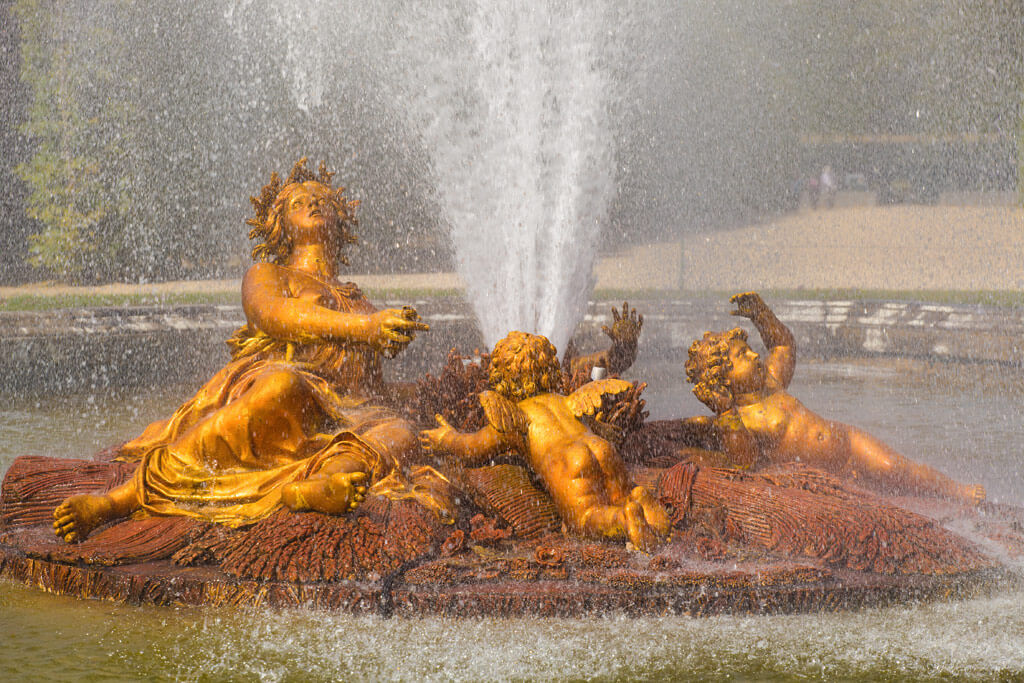Bougival is a picturesque small town near Paris, located on the banks of the Seine River. During the 19th century, the Impressionists chose this peaceful place as their favorite open-air workshop. People like Monet, Sisley, or Berthe Morisot spent long periods in this town trying to catch the beauty of the Seine River and its banks, and soon Bougival’s landscapes became the subject of many of their masterworks.
But this ‘artistic revolution’ was not the only revolution in Bougival. Two centuries before, a powerful king decided to build a fantastic and revolutionary engine in Bougival: La Machine de Marly.
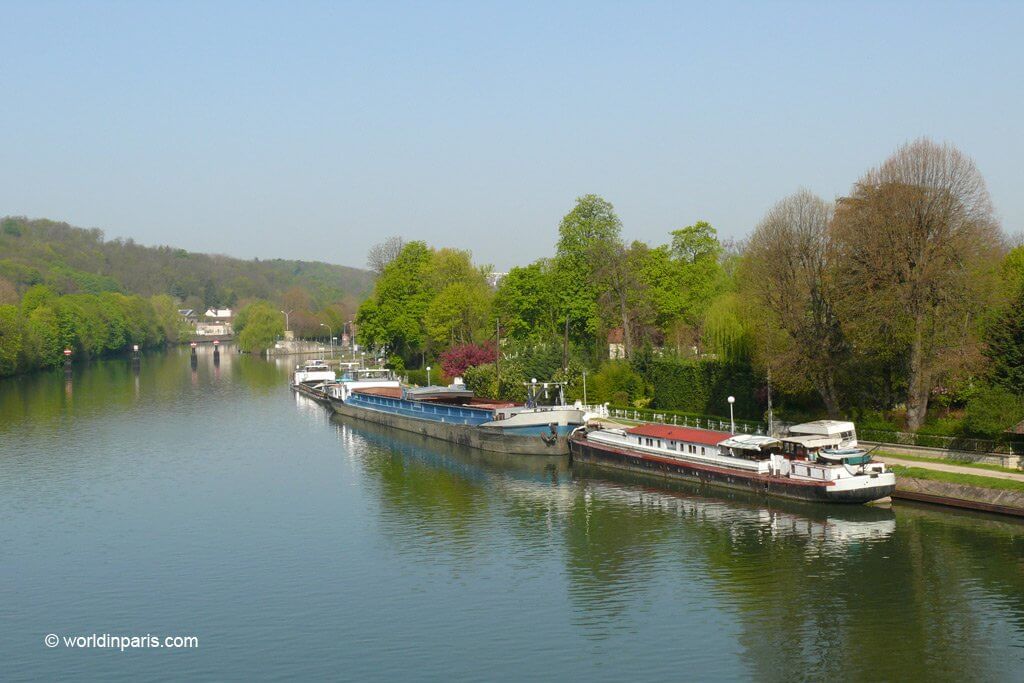

How to Bring Water to Versailles
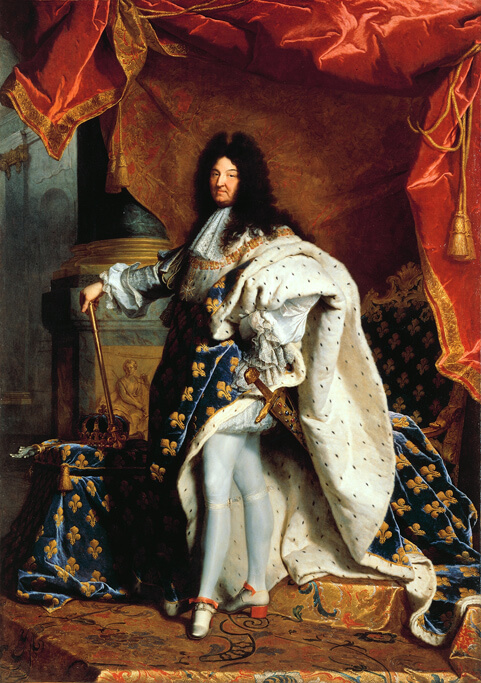
Let’s go back in time to meet King Louis XIV. By the year 1680, he was busy with the design of the Versailles Gardens and its fountains.
The fountains of Versailles are an alliance of art and technique that requires a lot of water. The Palace of Versailles’ location, on the top of the hill and far from any water source, was not ideal for such a big project of water basins and fountains. Therefore, water supply was a recurring problem in Versailles.
The King asked his architects Mansart and Colbert: ‘If water does not arrive in Versailles by itself, we will have to carry it!’.
This technical challenge required the genius of hydraulic engineers, architects, and fountain masters who had to think about bringing water to Versailles, redistributing it in the Grand Canal and fountains, and finally creating surprising water effects to impress the King’s guests.
La Machine de Marly, the Eighth World Wonder
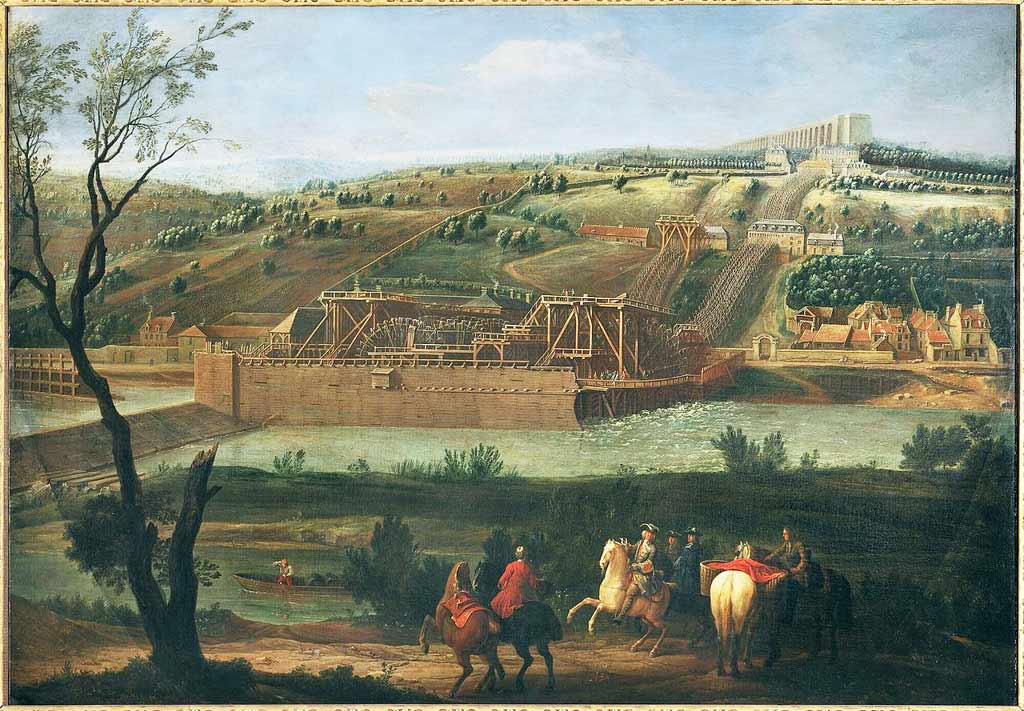
How did the Fountains at Versailles Work?
From 1661 to 1680, the King’s engineers tried different solutions: artificial ponds near the palace, aqueducts, watermills, and a network of channels.
However, the fountains were growing in number too, and they had more water jets, so Versailles needed more water to feed them. At a certain point, these hydraulic solutions became obsolete.
La Machine de Marly was built between 1681 and 1684 to pump the water from the Seine River and then bring it to Château de Versailles and Château de Marly (the King’s weekend castle).
This technical challenge was taken up by engineers from Liège, who applied pumping techniques used in the Liège mining industry at Marly but in unprecedented proportions.
La Machine de Marly was a marvel of civil engineering. It was located on the Seine River banks, at the foot of the Hill of Louveciennes in Bougival. It was considered a World Wonder at the time, and it may have been the most extensive system of integrated machinery ever assembled to that date.
Fourteen wheels (like Louis XIV), twelve meters in diameter, moved more than two hundred and fifty pumps to bring up 5,000 m3 of water per day. The water was then directed by gravity through an aqueduct (Aqueduct de Louveciennes) to three successive reservoirs used to feed Versailles and Marly’s water games.
This super machine – also called the Eighth World Wonder -, soon became a manifesto of King Louis XIV’s grandeur, a propaganda tool. The Machine of Marly was visited by tsars, queens, American presidents, and other important people.
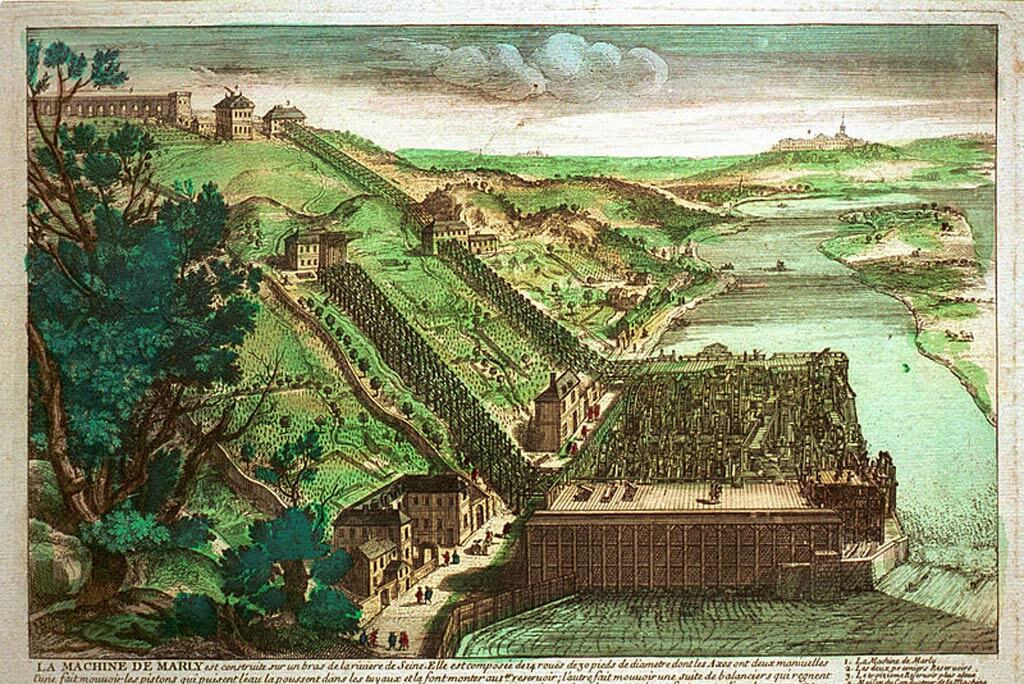
La Machine de Marly worked until 1817. After this year, other installations followed, using steam and later electricity to move the wheels and pump higher water quantities.
The last Machine of Marly (1859 to 1963) was designed by Dufrayer, using the same principles as its predecessors but with new technologies. With only 6 wheels, it could bring up 18,000 m3 of water per day. This last machine stopped working in 1963, and then it was demolished.
Today, some remains of this machine are still visible in the towns of Bougival and Louveciennes. Let’s explore them!
La Machine de Marly at Bougival
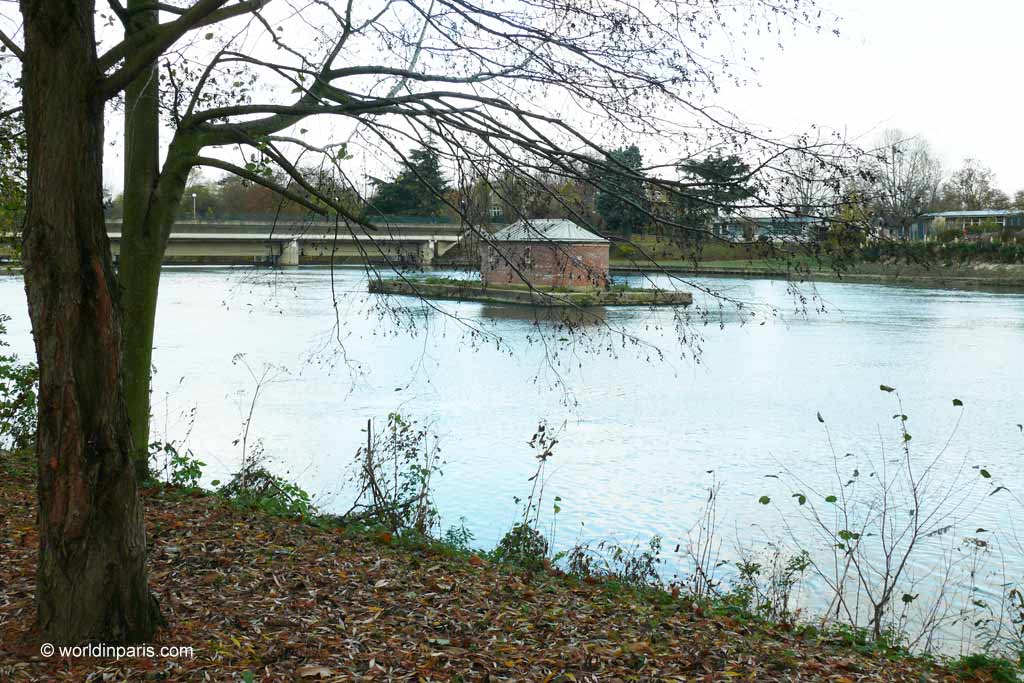
Bougival is located on the banks of the River Seine, 15 km west of Paris. In this town, there are still some remains of La Machine de Marly:
» The Neoclassical building (1825) built to host the steam engine;
» Some administrative offices, warehouses, stables, and lodgments;
» A little brick service building in the middle of the River Seine.
There’s a path to climb up to Louveciennes with more remains of the machine just behind the neoclassical building.
Machine of Marly’s Chemin de Mi-Côte
Le Chemin de Mi-Côte was the path parallel to the pipes and pumps used to transport the water from the Seine River up to the top of the Louveciennes Hill (+195m). The machine’s workers took this steep path every day to repair eventual breakdowns.
Today le Chemin de Mi-Côte is a green walk with informative panels about the Machine of Marly. These are the remains still visible along the Chemin de Mi-Côte:
» Small constructions for the pumps and the forge;
» La ‘Ferme de Mi-Côte,’ a kind of wooden hut to host the forge for the Machine’s maintenance.
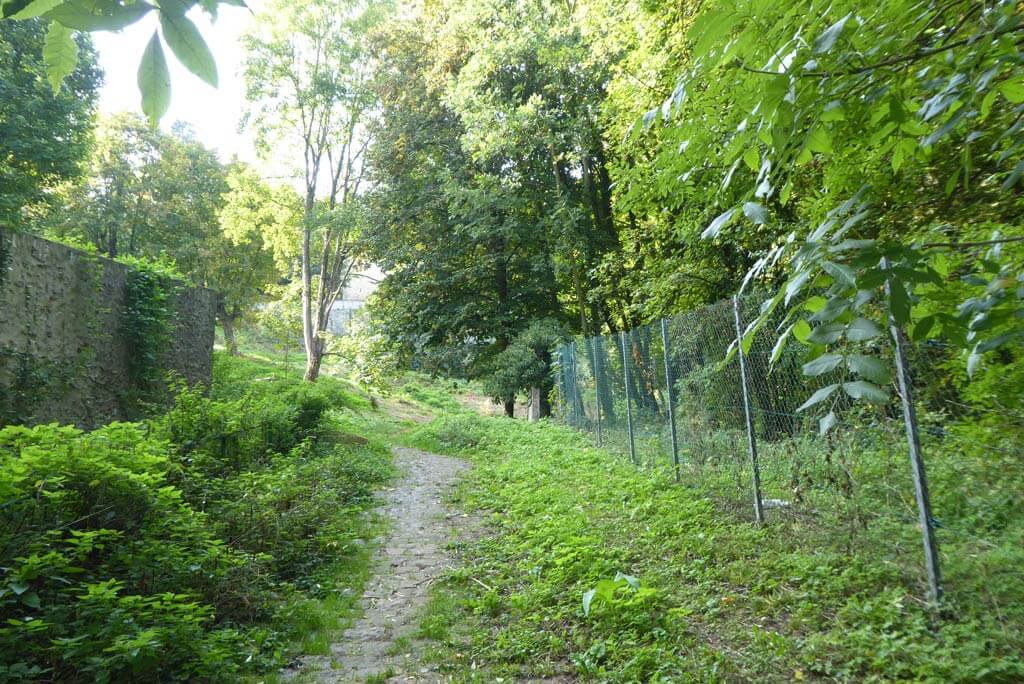
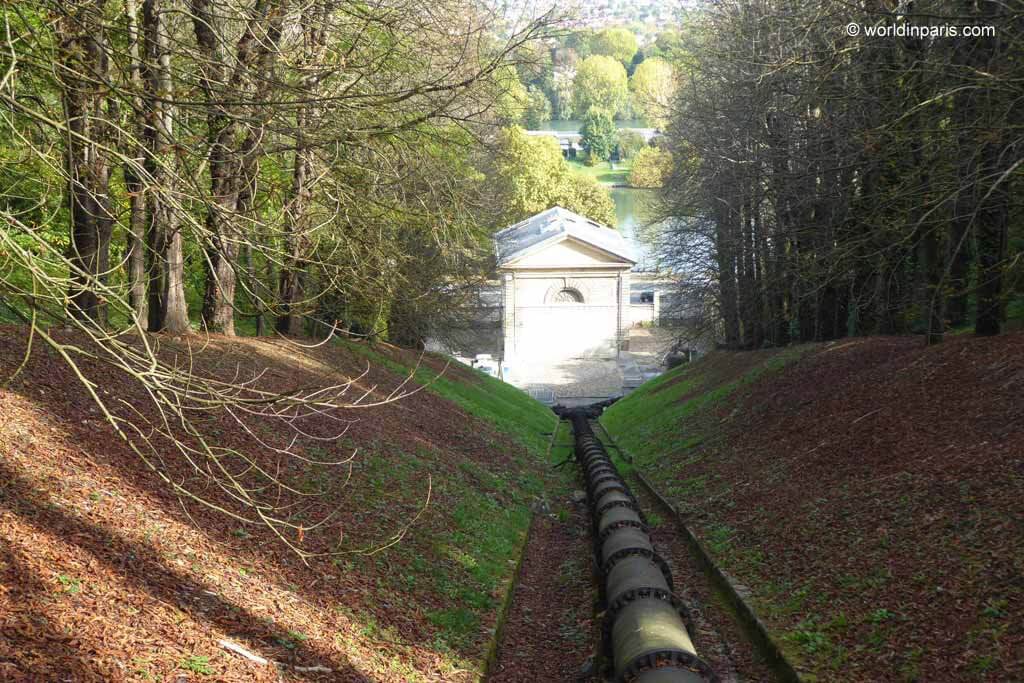
Years later, la Ferme de Mi-Côte was turned into a farm. This farm was the subject of the painting ‘Louveciennes, hauteurs de Marly’ by Alfred Sisley.
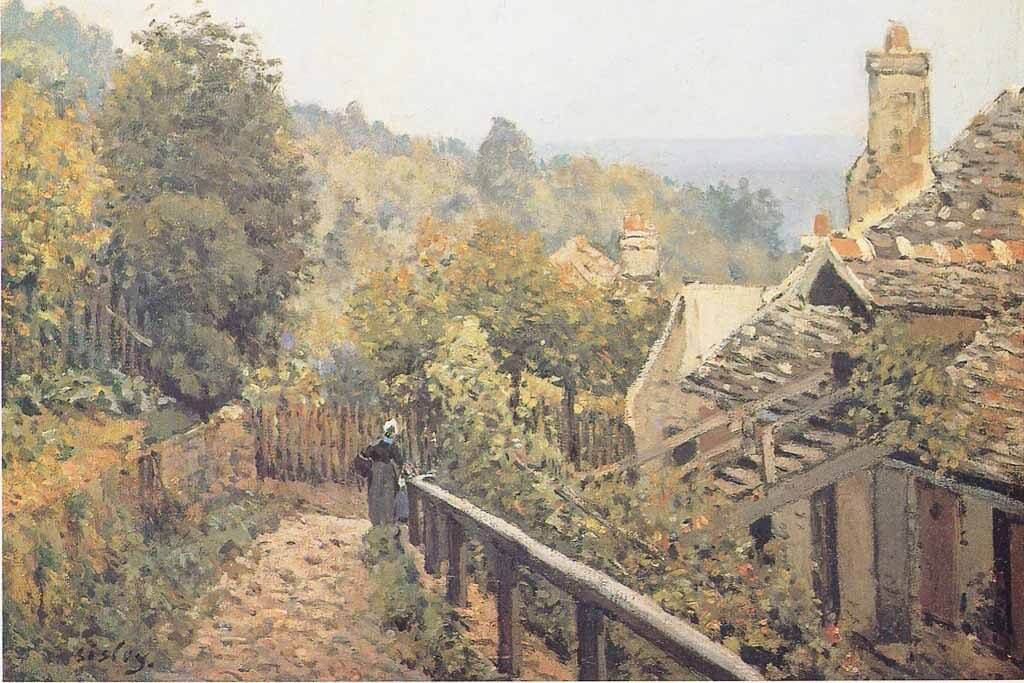
Be careful because this path can be very slippery, especially after a rainy day. This path is steep (some parts have a slope of 20%), and it can be tiring for some people. However, it is a fascinating place to see, and once you get to the top of Louveciennes Hill, the views over Paris and the Seine River are gorgeous.
Aqueduct de Louveciennes
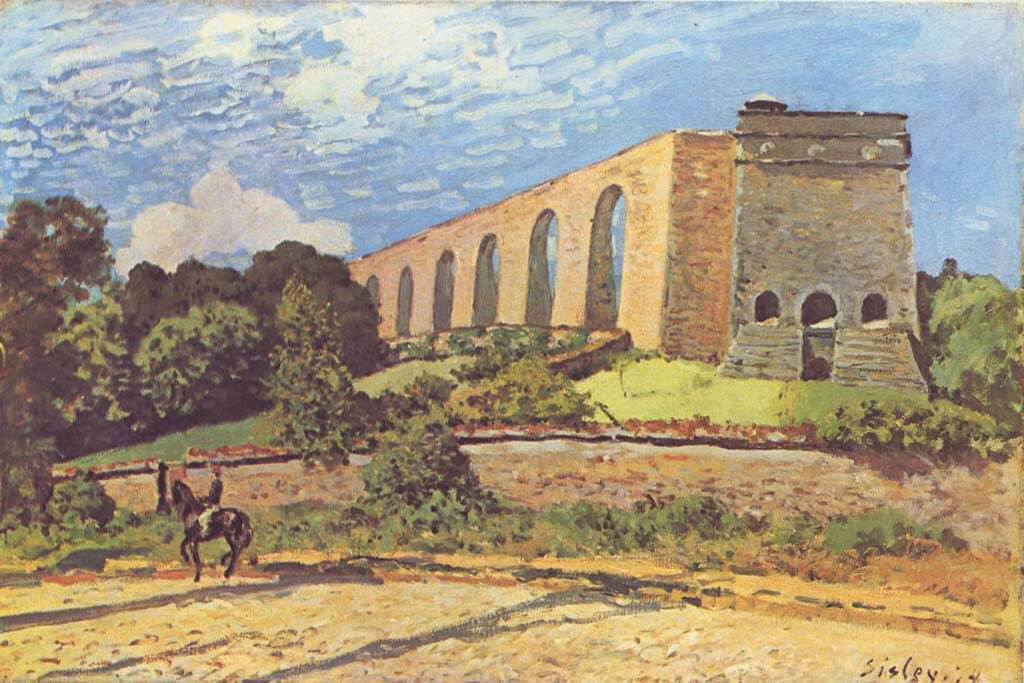
The Aqueduct de Louveciennes, located on the top of Louveciennes Hill, was built by King Louis XIV’s engineers in the 17th century to deliver the water pumped by the Machine of Marly to the Château of Versailles and Château of Marly.
The water from the River Seine was pumped up to the Hill of Louveciennes (+195m) by pipes placed on two paved inclines, and it flowed into the reservoir located at the summit of the aqueduct’s east tower. From there, the water was transported by gravity to the two castles. The Louveciennes Aqueduct worked until 1866.
Today, it is possible to follow the Aqueduct of Louveciennes on foot and look inside the east tower’s reservoir. The second picture here below is taken from the water reservoir in the aqueduct’s east tower.
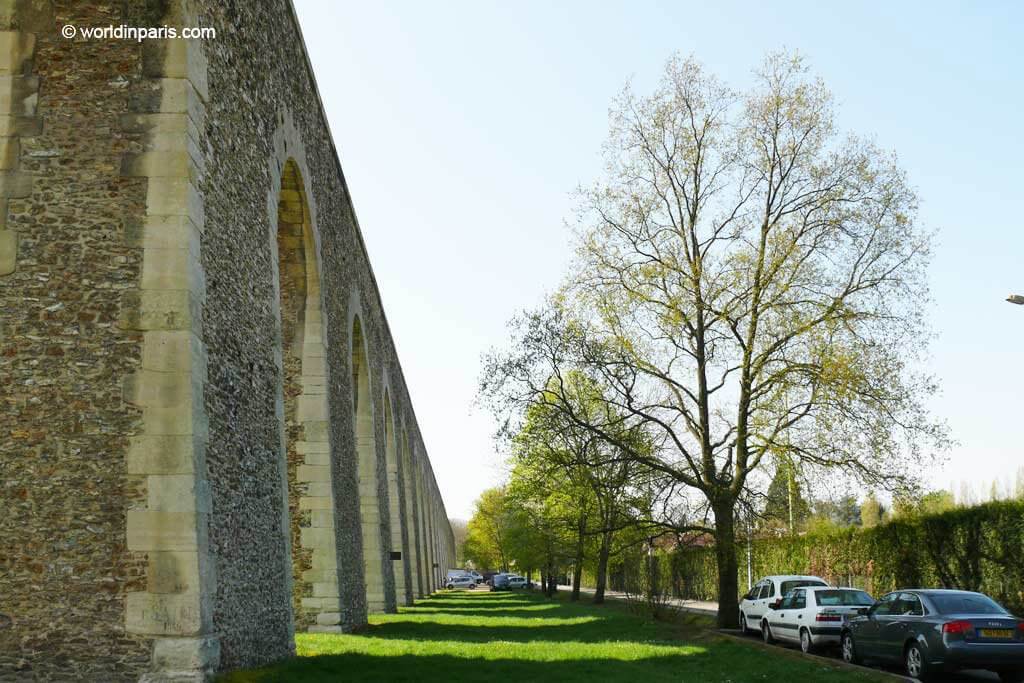
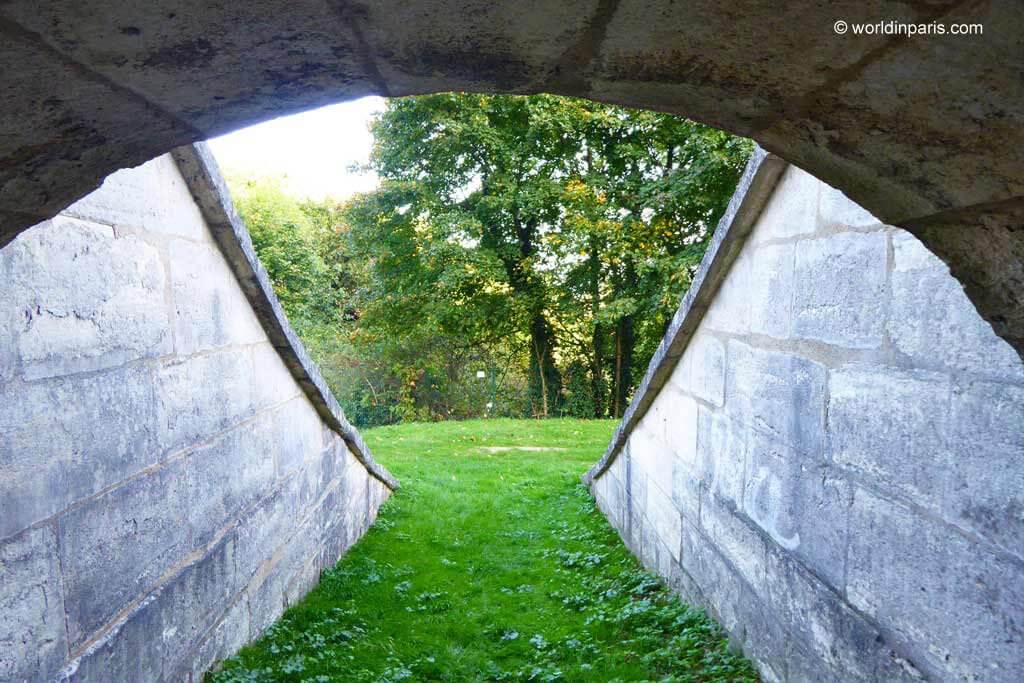
BOUGIVAL AND LOUVECIENNES TRIP PLANNER
Bougival and Louveciennes are two towns located in the Yvelines department, in Ile-de-France. SNCF trains leave Paris from Gare Saint Lazare to Bougival and Louveciennes train stations every 20 minutes. The train journey Paris – Bougival lasts 38 minutes.
Versailles Gardens
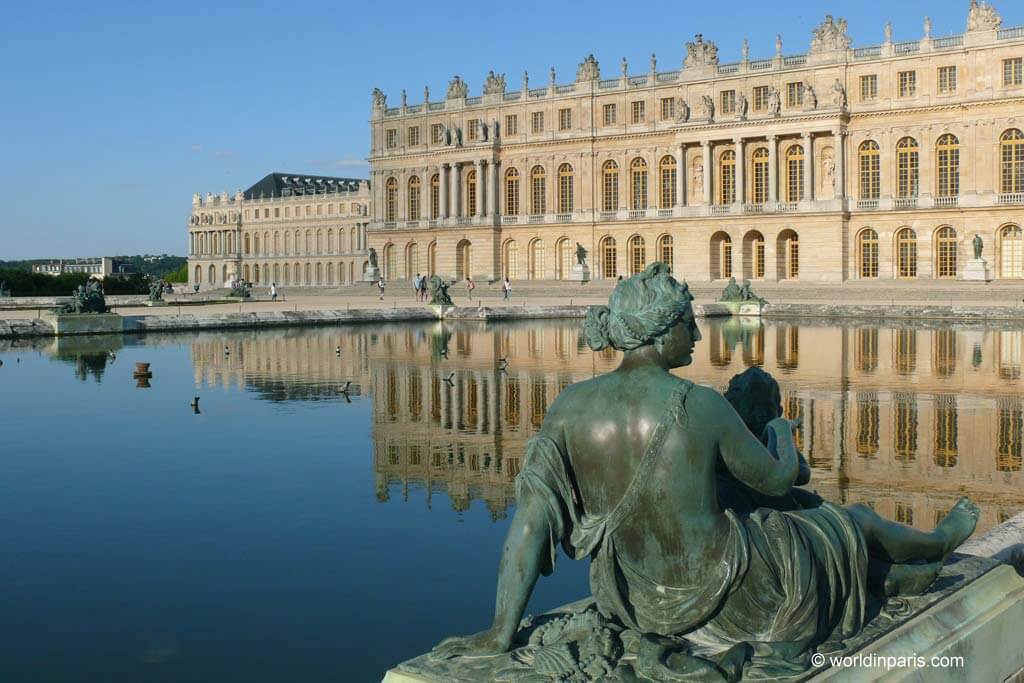
After a long journey, the water finally arrived at Versailles Gardens to water its parterres and feed the fountains.
Versailles Gardens were designed between 1660 and 1670 by André Le Notre, the same landscape designer who created the Gardens at Chantilly. Versailles Gardens are his masterwork, where he perfected the concept of ‘French Garden.’
The Gardens of Versailles are located on the west of Château de Versailles, surrounding the château on three sides. The gardens cover 800 hectares of land and are a key component of the royal residence. Actually, King Louis XIV considered the gardens as important as the château itself.
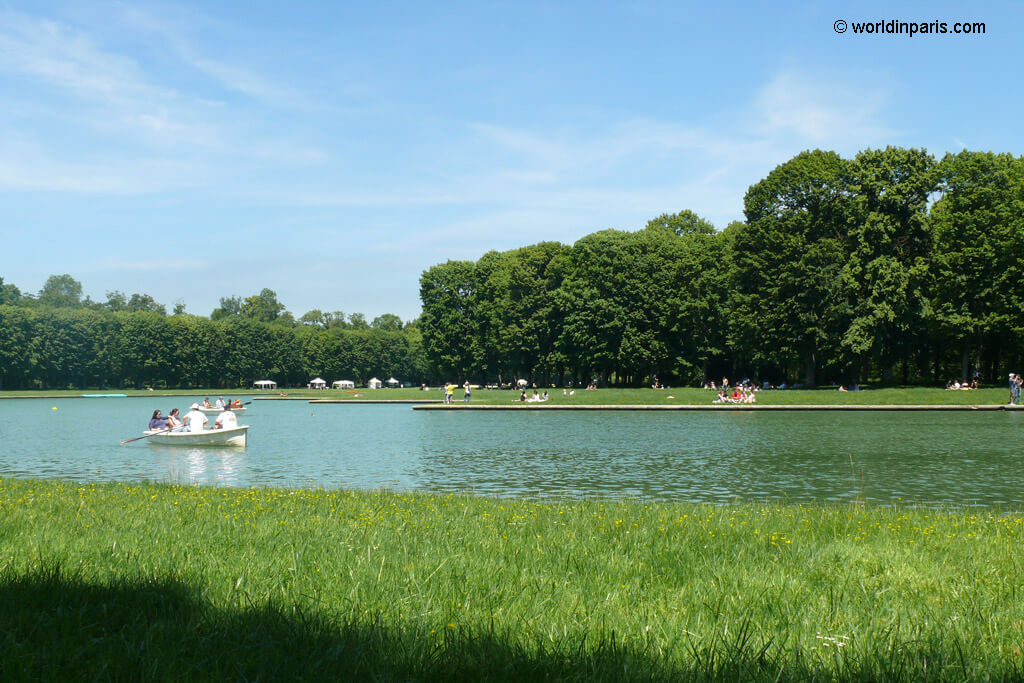
The Gardens at Versailles are made of different walks, parterres, and paths, all enhanced by sculptures, fountains, and other water features for the eyes’ pleasure. The east-west axis became the ‘Grande Perspective,’ dominated by the Grand Canal.
The gardens can be visited independently from the château. There are many interesting ways to explore Versailles’ gardens and park, apart from walking, of course! Versailles by bike is very popular amongst locals, but the Versailles Gardens by Segway or by rowboat in the Grand Canal are also fun.
VERSAILLES TRIP PLANNER
- How to Plan the Perfect Day Trip to Versailles from Paris
- Versailles Skip the Line Tips
- How to Get from Paris to Versailles
Marly Gardens
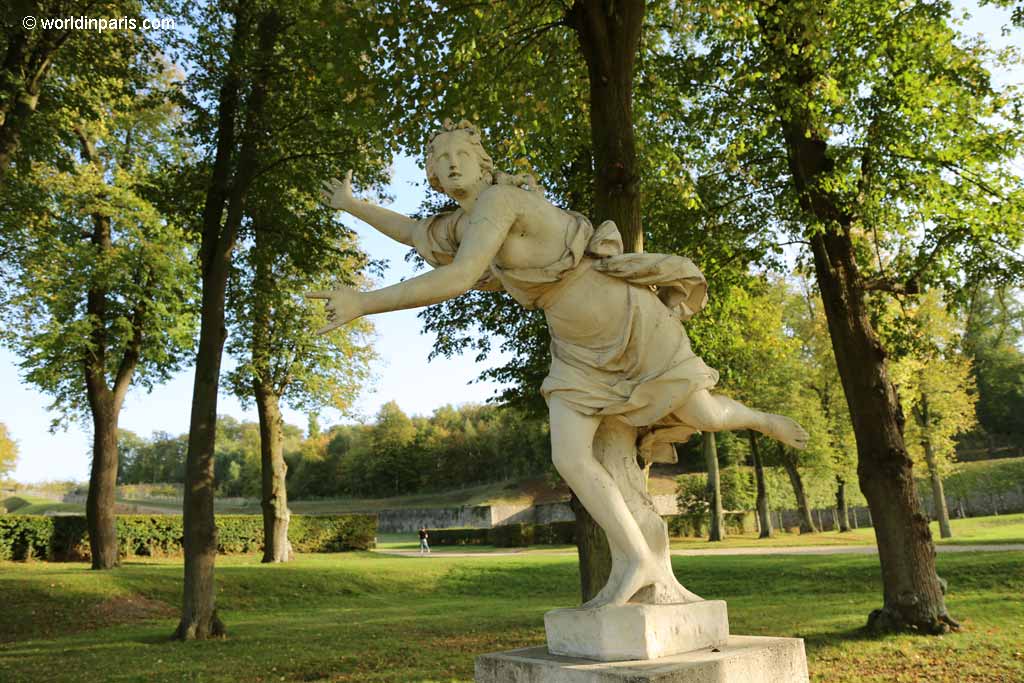
Château de Marly is one of the castles near Paris worth visiting. Located in the commune de Marly, Château de Marly was King Louis XIV’s weekend residence. This château was smaller and more intimate than Versailles, and only a few people had the honor to be the King’s guests in Marly, appointed directly by the King a few days before the departure.
The château was destroyed during the French Revolution, and only a few remains are left. But the park surrounding the château has been restored with its waterways and lawns, and it is perfect for a stroll on a sunny day.
MARLY TRIP PLANNER
Marly is one of our favorite Sunday day trips out of Paris. From Paris Saint Lazare train station take the train line L and stop at Marly-le-Roi train station. From there, it’s just a 10-minute walk to the château’s gardens.

